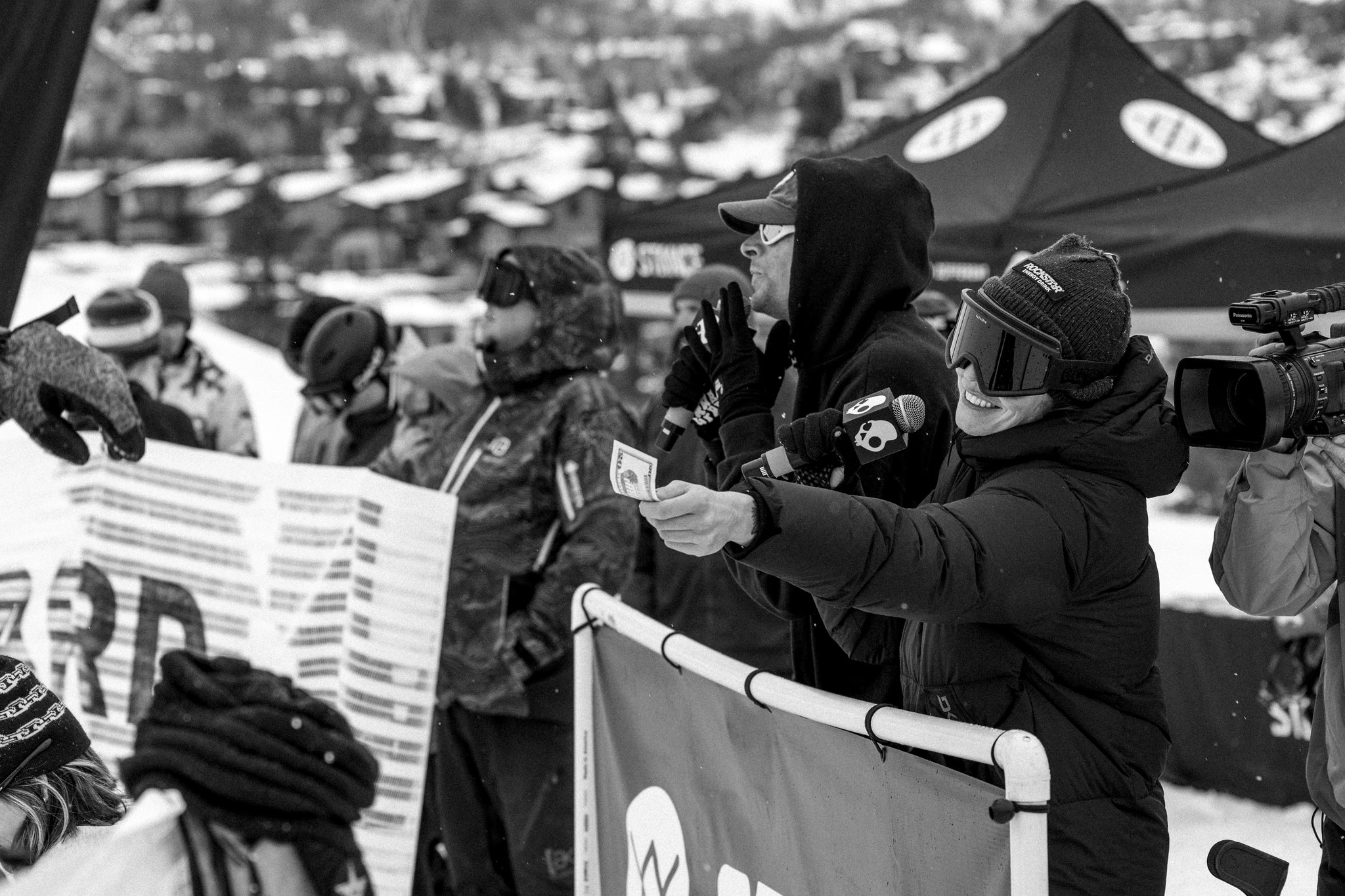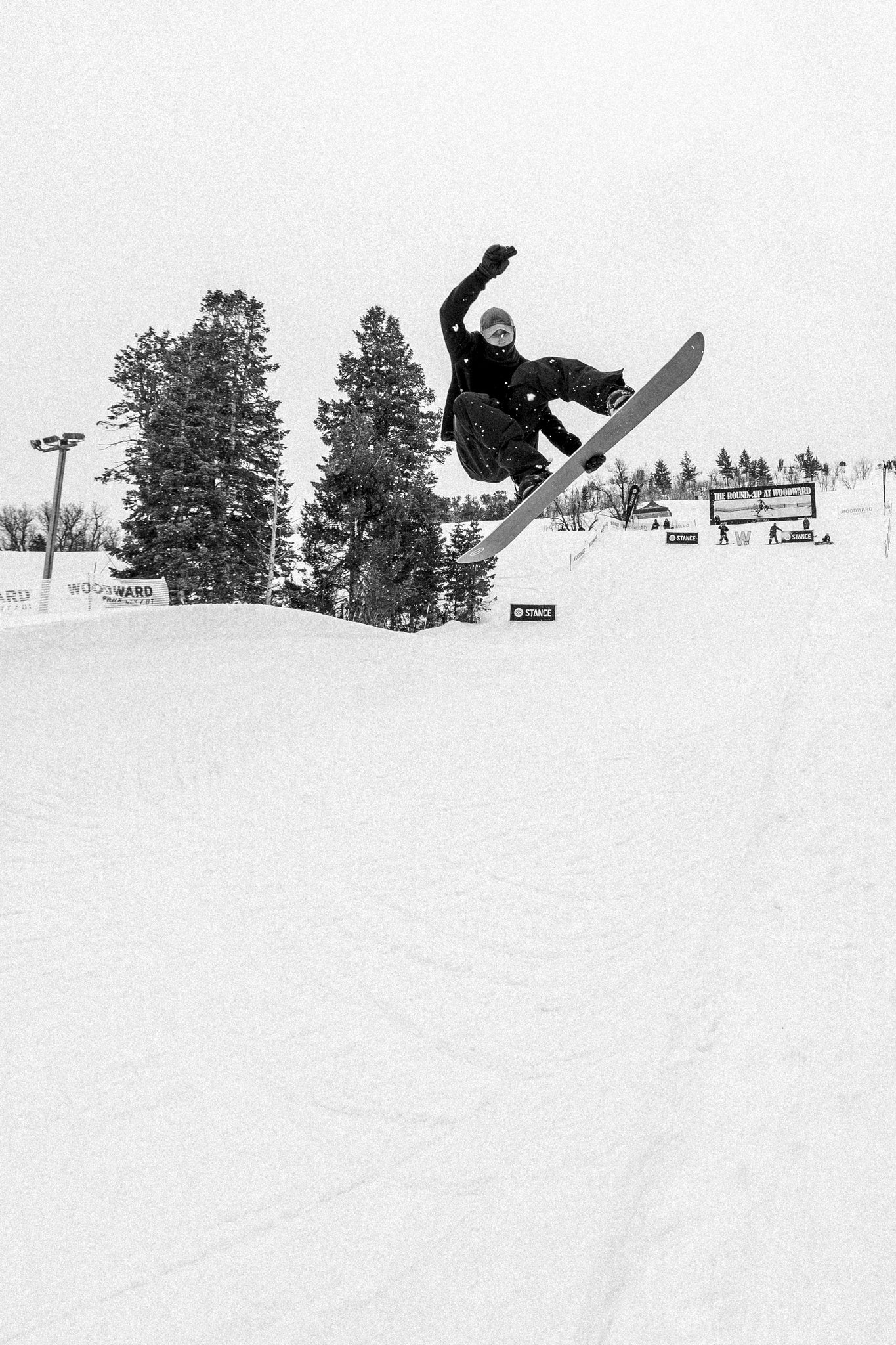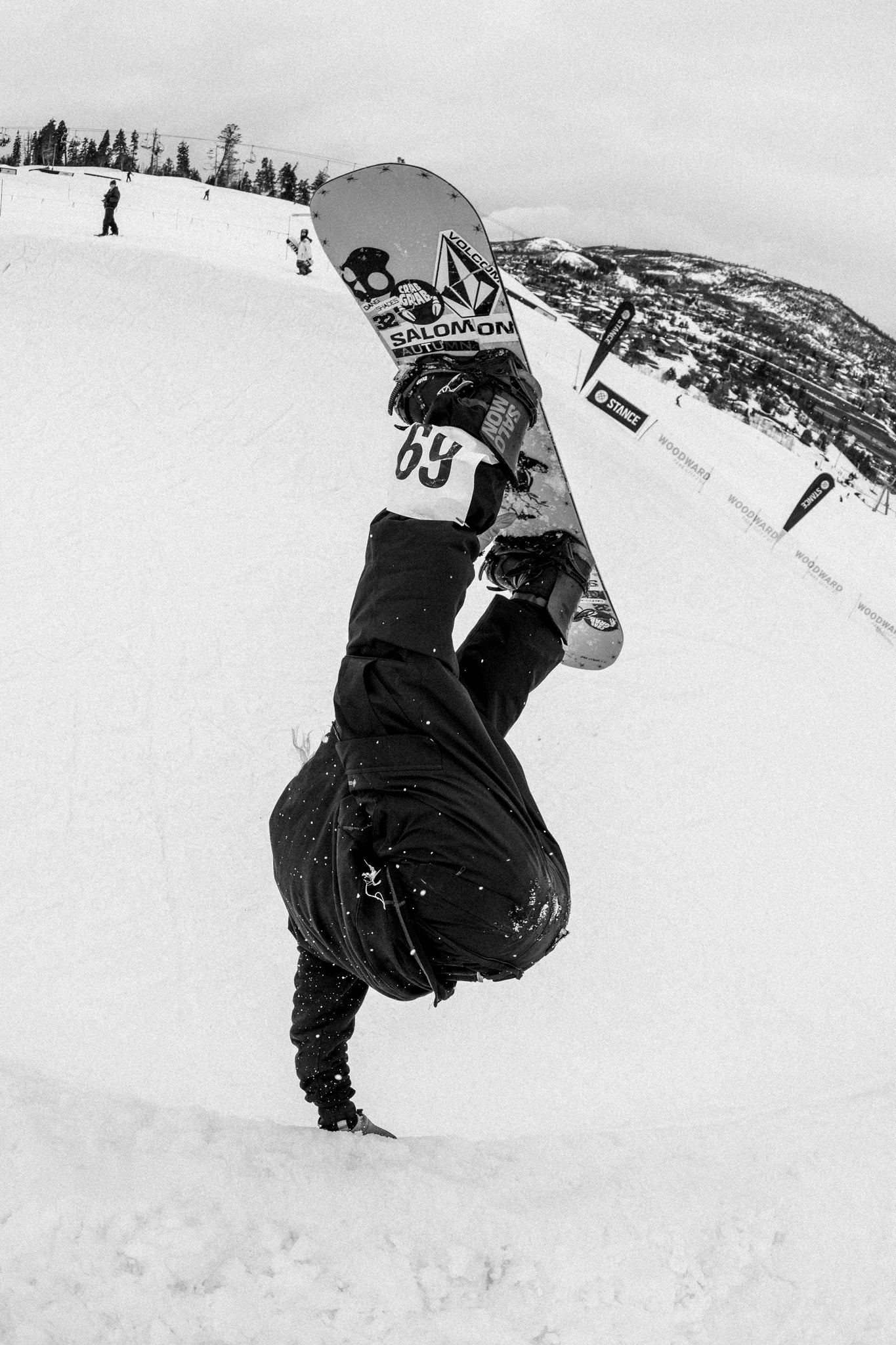There’s a certain amount of history that exists with a mini pipe. It’s both tradition and a precursor. Before there were triple corks and twenty-foot airs, there were five-foot methods in rutted-out little ditches. We’ve evolved though. The pipe walls, the airs, the tricks, they all got bigger. But evolution doesn’t always mean abandonment. We can exist in tandem with the past, not in spite of it. So much of the world—the real world and the snowboard world, although for us, is there a difference? —is high stakes. Everything is always on the line. It’s easy to feel inadequate like you exist on an alternate, slightly less prosperous plane from everyone else. It’s easy to get dismayed when staring down the walls of a full-size, twenty-two-foot halfpipe. The little voice in the back of your mind comes crawling up. Can you even get to coping? It says. You ignore it. The voice persists though. Ayumu could get to coping.

It can get to be too much. In a world full of switch-back tens and ally-oop mctwists, sometimes it’s nice to forget all that. Sometimes it’s nice to do that five-foot method. Sometimes, it’s nice to get back to your roots.

There was a hint—only a hint, nothing more—of skepticism in the air on finals day. For a mini pipe to operate at full capacity it needs to be slushy. It’s one of the unwritten laws in snowboarding: Pipe needs to be slushy. Always break down your spots. Oh, you won money. Ten percent rule.
There was a small group of us waiting by the registration tables on the second floor of the Woodward Lodge. Through the windows, we saw the snow turn to rain and turn back to snow. I say, only a hint of skepticism, because it was light, a drizzle, and a flurry.
Qualifiers, the day before, had been a masterclass in desirable conditions: sunny, warm, well-cut walls that were soft but still held speed. It had been perfect. But now, as we looked out onto the hill, the clouds showing no signs of breaking, there was a tinge of anxiety. Or maybe I was just projecting onto the group.

The moment my foot touched the snow I realized any fears I had were unwarranted. My foot sank deep, real deep, into the snow. The snow was soft and the precipitation was starting to let up. The clouds still didn’t look like they would disappear, the sun was a long way off. But things were starting to work out.
It was a slow congregation at the bottom of the pipe. When you scale down in size, you sacrifice rigidity. This isn’t a bad thing. A strict format would seem forced in the smaller medium. There were no coaches, no U.S. Team jackets. Jill Perkins, our captain for the day—or…is there a Wild West equivalent for captain? Ranch Hand? Head Cowgirl? —stood at the bottom prefacing every update about the schedule with about: Rider’s meeting in about ten minutes. Jam for about two hours. Etc. There were no set number of runs, no rules. People just rode. It was as simple as that.

Something else you sacrifice when you scale down is exclusivity. This, once again, is a good thing. Not to beat this comparison to death—to beat a dead horse if you will. See, I’m getting a hang of this whole farm life thing—but the top level of competitive halfpipe riding is very exclusive. It’s usually no more than ten riders. Ten riders who have trained their entire lives to be there. The mini pipe is more inclusive. You see people from all over. You have the creatives (Mike Rav), the Cross-Pollinators (Nicole Hause), and the certified units (Aito Ito). The pipe obviously wasn’t limited to those three. The day was a never-ending stream of riders and tricks: Summer with a crippler seven, Cooper with a switch crippler seven, Joey Fava constantly going ally-oop, Scott Blum holding up his board for people to smack. Riders were spraying tricks across the pipe like they were pellets from a shotgun. Mikey LeBlanc’s ollie to flat compared to Aito’s ally-oop McTwist was a testament to the diversity of maneuvers throughout the day.
I’d be remiss—or maybe she’ll just fire me—if I don’t mention Katie Kennedy’s crippler. Maybe she got inspired by Naima (her crippler was awesome by the way) but Katie kept persevering like the warrior she is, walking away with the Nixon Best Time award. For the men, it was Joey Fava who took home Best Time. Although, for him, it should have been called Most Time since I don’t think I saw anybody else get as many hits through the pipe. The honorable mention of the day went to Jack Warble who undoubtedly went the biggest. Best Handplant went to Max Warbington for his switch plant and Desiree Melancon for her classic frontside invert. Des even made the trophies for this award.

At the end of the day, when the dust settled, and the smoke cleared (aren’t you just loving all these old western references? They seem fitting) it was Jack Coyne and Ellie Weiler who walked away with the bragging rights…oh, and five grand of course. Congratulations to both of you, hope you put that ten percent rule into effect. 
A big thank you to Jill, Stance, Nixon, Skullcandy, and Woodward Park City for bringing back the mini-pipe event. Without ya'll we may have forgotten the good times that come with such a simple feature and we wouldn't have been able to see Pat Bridges last 24 seconds on the mechanical bull.



















